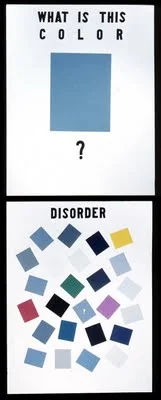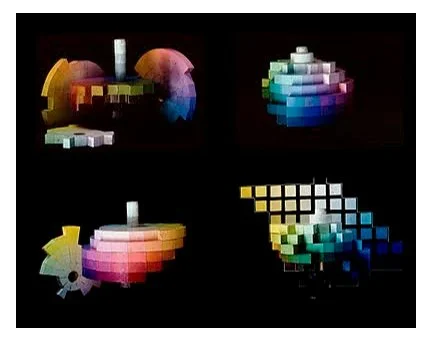Quantifying Color - The Munsell Color System and the Hagley Library's ISCC Collection
I acquired my first Munsell Soil Color Chart during an archaeology field school in upstate New York back in 2003. Using it in the field, our team matched soil samples layer by layer, identifying shifts in composition, inferring geological timelines, and building expectations about what lay beneath our feet. As I flipped through its matte color chips—arranged in strangely exacting gradations—I couldn’t help recalling the watercolor Goethe color wheels I’d painted in elementary school art class. Hazy, intuitive blends of red, yellow, blue, and violet, they seemed light-years away from the Munsell chart’s dry precision.
But these two tools—one scientific, one sensory—are closer than they appear.
Where Newtonian color theory emphasized spectral purity and mathematical description, Goethe’s contribution was profoundly human: color, he argued, is perceived before it is measured. The body, the eye, the shifting conditions of experience—all affect how color is seen and known. This idea—bridging optical physics and perceptual subjectivity—comes full circle in the work of Albert H. Munsell, an oil painter turned color theorist who developed his system for describing color in 1899.
Munsell was a pragmatist and an artist. He studied color blindness, invented educational crayons, and designed the Munsell Color Sphere, a three-dimensional model mapping hue, chroma, and value. His work became the foundation for a movement toward standardized color description—vital for science, industry, and commerce alike.
That movement gained momentum with the formation of the Inter-Society Color Council (ISCC) in 1931, where leaders from companies like DuPont, Hallmark, Hewlett-Packard, and Xerox came together to unify the language of color. The ISCC remains instrumental in everything from denim production to screen calibration—demonstrating how shared standards allow something as slippery as “color” to be used reliably across disciplines.
Several years ago, the ISCC’s papers arrived at Hagley Library, where I’ve spent time with their pictorial and print materials. The collection includes color charts, slides, correspondence, and films documenting the evolution of the Munsell system. Among them are papers from Dorothy Nickerson, a pioneering color technologist who worked in Munsell’s lab and later developed national standards for the USDA.
Below is an image from the collection showing Munsell and his family with the Color Sphere—a sculptural model of his theory in motion. Each “slice” of the sphere represents a hue; each axis maps a new vector of lightness or saturation. It’s not just beautiful—it’s a machine for translating subjective vision into communicable form.
Sources & Further Reading
• Munsell Color System
• Goethe’s Theory of Colours – Wikipedia
• ISCC official site
• Hagley Library Collection
• Munsell Soil Color Chart – USDA
Christopher Chenier - Middletown, CT
For more information about the Inter-Society Color Council and these images, please contact the Hagley Library's Pictorial Department.


